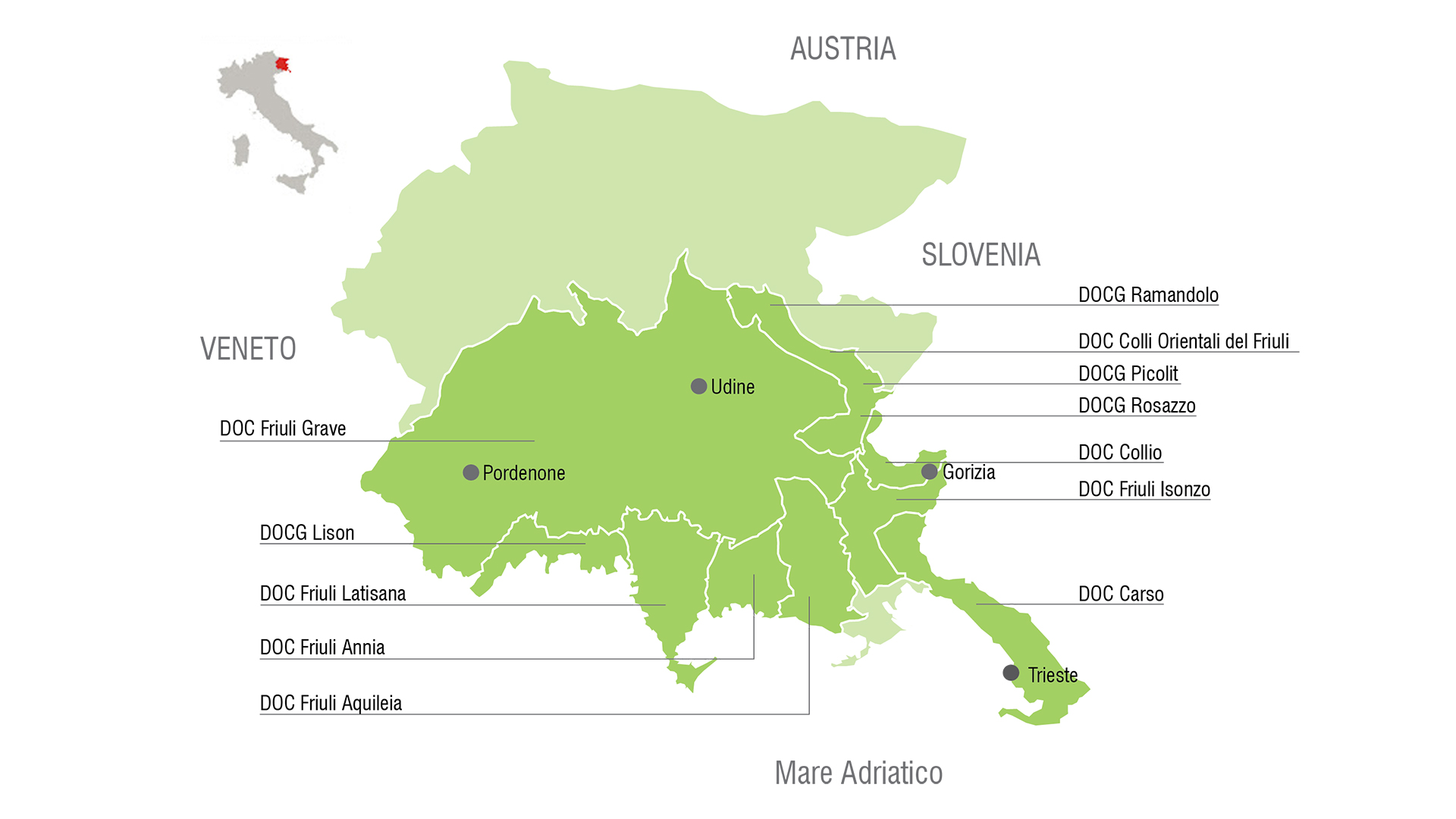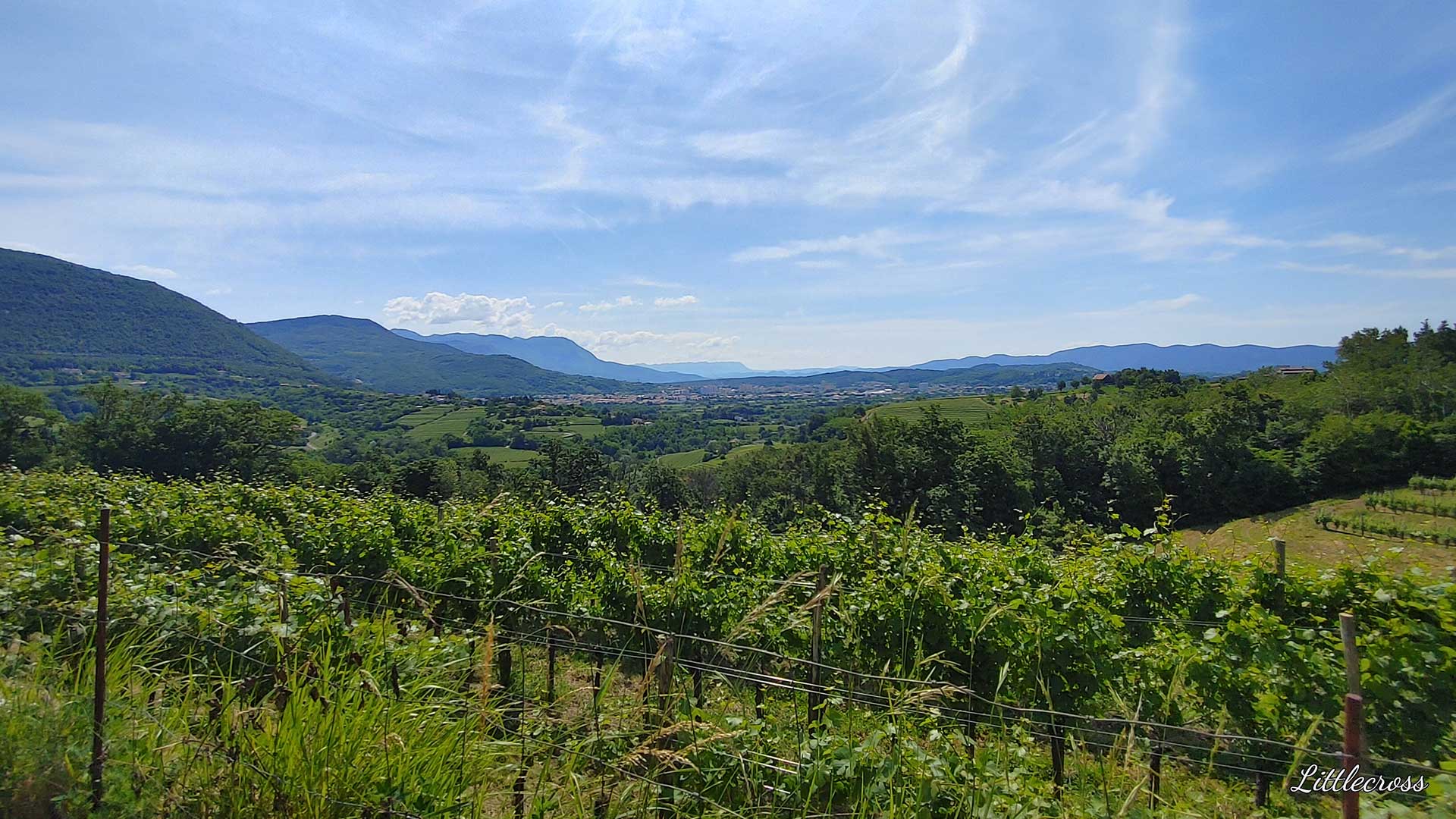FRIULI-VENEZIA GIULIA REGION
Friuli-Venezia Giulia is an autonomous region of Italy, in the far northeast corner of the country, bounded by the borders with Austria and Slovenia. A region with a complex and varied morphology that encompasses the Julian Prealps in the north, an extensive range of foothills and hills that fade into gentle plains that slope down towards the sea.
This complexity of the territory and of the climatic variations are reflected in the wide variety and quality of wines produced from these lands, particularly suited for viticulture.
The eponymous wine region has four DOCGs, twelve DOCs, and three IGTs and is best known for its white wine production.
The bond between the territory, its inhabitants and viticulture is the key to understanding the long lasting reputation of Friuli-Venezia Giulia as a wine region which essentially depends on a select group of quality-conscious winemakers.
DOC Friuli-Venezia Giulia vineyards cover an area of around 23.000 hectares, among which 60% is represented by white grapes and more than 75% is DOC certified. There are around 1.500 grape growers, while 80% of the wineries own less than 10 hectares.
DOC Friuli-Venezia Giulia (in short DOC Friuli) includes, among the others, DOC Collio and DOC Friuli Grave, the two specific areas where Poderi di Carlo’s vineyards are located.
DOCG
DOC
IGT
COLLIO: HILLS & HISTORICAL VINEYARDS
Collio means “hill”, and the name is attributed to an area of 1.500 hectares of vineyards with a landscape of considerable interest, extending across hills and high grounds made of marl and sandstone of Eocene origin (the so called “Ponca”), marked by a series of ordered rows of vines.
Collio DOC is the appellation that refers to the excellent wines produced on the hills near Gorizia, along the border between Italy and Slovenia.
This area has a long tradition of vine-growing and winemaking, which dates from the pre-Roman era and has not been changed over the centuries. The circle of Julian Prealps (Prealpi Giulie), together with the proximity of the Adriatic coast, which is about twenty kilometers away, contributes to mitigate the temperature ranges thus favoring the establishment of a mild and temperate microclimate from which viticulture takes particular advantage. Furthermore, the phenomenon of the reflection of sun rays on the near sea determines the effect of increasing insolation thus creating a mild microclimate.
The result is fruity, fine, pleasing, harmonic wines which reflect the varietal characteristics of the terroir from which they originate. Collio DOC includes seventeen grape varieties, which correspond to thirteen white wines and six red wines.
Grape varieties
White wines
Red Wines
GRAVE: SAND & STONES
Friuli Grave DOC extends over about 7.500 hectares between the Alps and the Adriatic Sea, covering the plains of several rivers, the most important of which is Tagliamento. The entire plain is made of alluvial and pebbly soils with large deposits of sand and stones that allow for excellent drainage, helpful in reducing the effect of heavy rainfalls. The nearby mountains protect the valley from icy winds blowing from the North; this feature, along with the mitigating influence of the Adriatic Sea, created a climate that is particularly suitable for viticulture.
Moreover, the differences between night-time and day-time temperatures enhance the development of sugar and aromatic components during the ripening of the grapes. The results are intense and elegant wines.
Friuli Grave DOC is particularly suited to white wines, which develop varietal intensity and aromatic complexity thanks to the peculiar terroir. The DOC includes a wide range of both international and local grape varieties, among which Pinot Grigio is the king.
Grape varieties
White wines
Red Wines


